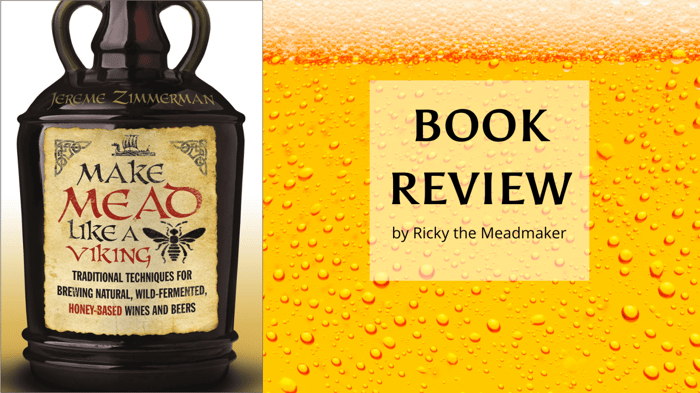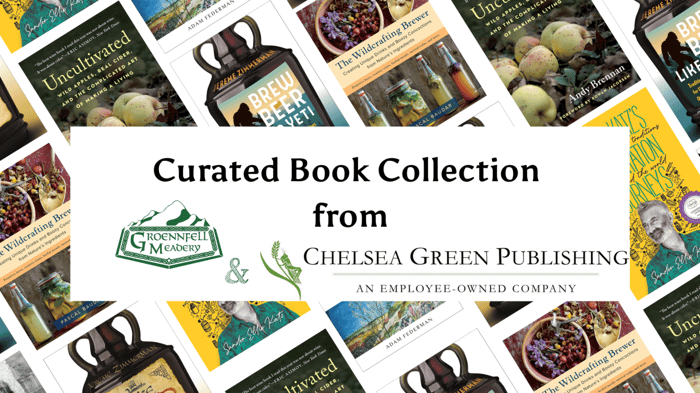Make Mead Like a Viking single-handedly turned me into a homebrewer again.
This was the very first book we selected to include in our store when we started carrying books again, and there’s a good reason why!
Although it isn’t the best-known book on mead making, we believe that Make Mead Like a Viking by Jereme Zimmerman is the most accessible and enjoyable book on mead. It delves deeply into the history of mead without getting lost there, and it provides techniques that allow budding mead makers to develop their own weird, wonderful, and wild brews.

Zimmerman begins with a lengthy introduction clearly setting out his goals for the book. Rather than focusing on specific recipes (though he does include several, more on that below), he wants to help new mead makers develop a new (or ancient) way of thinking about mead and alcohol in general.
In his own words, “Research into ancient mindsets pertaining to the brewing of alcohol, storytelling, and mythmaking are the prevalent notions that fueled this book.”
Having read literally scores of brewing, cocktail, and historical food and drink texts, what spoke to me, more than the content itself, was the mission with which Zimmerman approaches the book.
In the increasingly dark wilderness of modern life... we can choose to emulate the Norse and other ancient cultures by bringing a sense of wildness, mysticism, and individuality to our unique, home-crafted brews.
Zimmerman’s credentials are solid. He’s well-read (I personally added eleven new books to my reading list from his citations), he has brewed innumerable batches which he has recorded and shared widely, and his background in farming and foraging helps connect all the pieces of the story. I mean, the dude grew up on a goat farm in Appalachia and wild forages mushrooms for medicinal beverages all while being conversant in modern sanitization standards.
Given that making mead is incredibly simple (it’s just honey, water, and yeast at its most basic), the fact that he goes a little light on the recipes is fine. The internet is absolutely full of recipes, including, of course, clone recipes for everything we brew. That said, I really enjoyed the recipes he included as they cover a broad range of styles and create a great jumping-off point.
While new brewers will definitely find his overview of different kinds of honey, yeasts, and historical brewing herbs, without a doubt my favorite section was the chapter he devotes to wildcrafting. His techniques for harvesting wild yeasts and herbs got me excited about brewing small batches again and bringing new ingredients into our sour series.
Zimmerman does potentially overstate the health benefits of honey, mead, and certain herbs, but it’s difficult not to become rhapsodic when discussing honey, bees, and wild brews. Overall, I think he does a great job of balancing the science and the more traditional. As he says, “I’m not anti-science… [but] I'd rather brew like a Viking than a chemist.”
As far as guidance on equipment goes, he makes a good case for starting with just a few easy-to-find pieces of kit, then expanding only if your passion calls for it.
On an absolute side note, I was delighted to find a section from one of my favorite authors, Jesse Frost, in the middle of the book. Although we don’t sell his book, we use his work on regenerative ag extensively, and you can go pick up a copy of The Living Soil Handbook from our affiliate Chelsea Green Publishing. I had no idea that he was an avid home wine and beer brewer.
The book is full of fun little facts and quotes (all with good citations, unlike many other books I’ve read) from laws protecting mead makers and mead butlers in ancient Wales to pithy little quotes like, “Archeological evidence suggests that what the Norse brewed was more akin to highly inebriating soup.”
So head on over to our curated books collection and throw a copy in your next order! You’ll be glad you did!




